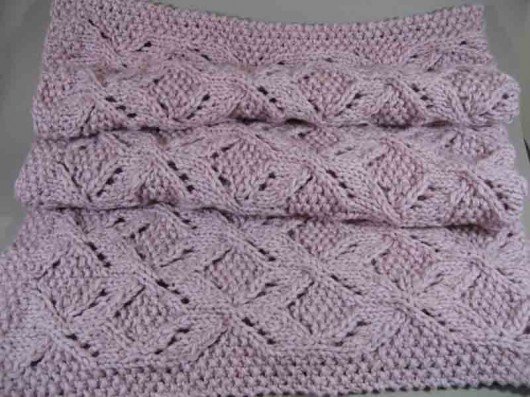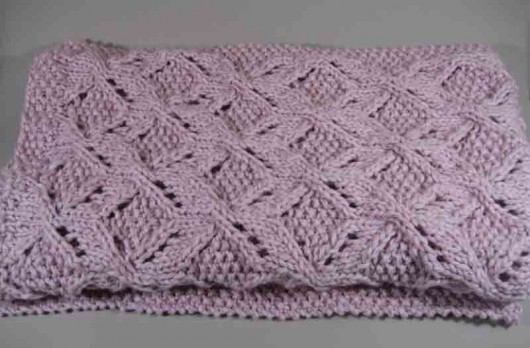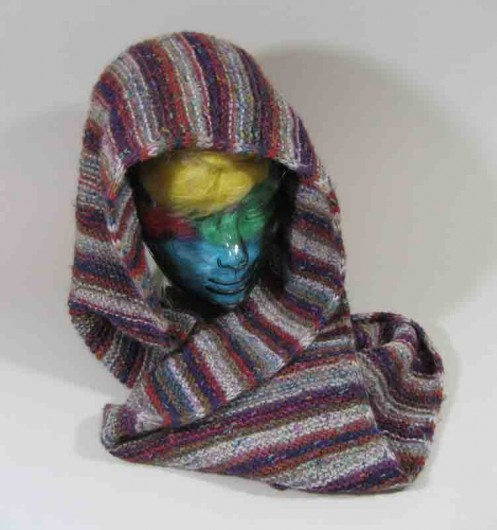This is Jared Flood’s Umaro, knitted here in Cascade Yarns Lana Grande. Lana Grande is a super bulky wool. The pattern forms over 28 rows and is repeated six times. So, for a throw, it’s quite a quick knit. Flood’s pattern is completely error-free–so cool in an age when, either for insufficiency of test-knitting or publisher issues, too many patterns have mistakes in them.
The pattern had me flummoxed at first. I separated the 12-stitch repeats by stitch markers, thinking that would help me keep my place. But it turns out this pattern “jumps” the markers as you move along, so I had to remove them. That meant keeping a bit more alert to the charts than I am comfortable with, but after the second repeat I was already able to see when I screwed up and fix it quickly.
Flood recommends Lana Grande for Umaro and I came across it at 30% off, so that was a nice find. The yarn usually had at least 2 knots in each 80 meter skein, which was fairly easily dealt with because it spit-splices well.
I knit the pattern on size 15 needles. My gauge was off a bit, but the fabric felt right so I just plowed ahead. Instead of blocked dimensions of 47 inches by 58 inches, I ended up at 45 by 52. Not sure how I lost that much length, but I suspect I didn’t steam the blanket aggressively enough as I blocked it. Mine does not have quite the verticality to the pattern as Flood’s sample.
The other possibility? I am not an experienced lace knitter. Until fairly recently I gave up on patterns that needed a yarn over between a knit stitch and a purl! I just couldn’t figure out how to do it. Kind of like “True Confessions” time here. More than 50 years knitting and still much more to learn. Then I found these directions on Carole Wulster’s blog. I’m been using them on a (small) series of lace knits and they’ve been working like a charm. No more odd yarn overs that don’t match their partner yarn overs. I’ve just learned some call this approach a “cheater yarn over.” Yipes. That sounds rather judgmental. But do you think there’s a chance this particular yarn over technique might tighten the yarn overs a bit so that the shape of the pattern changes some?



